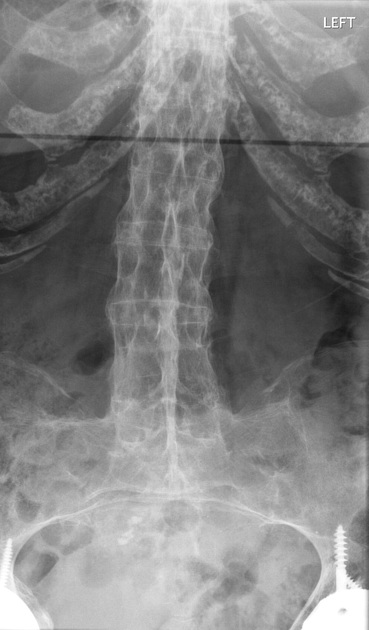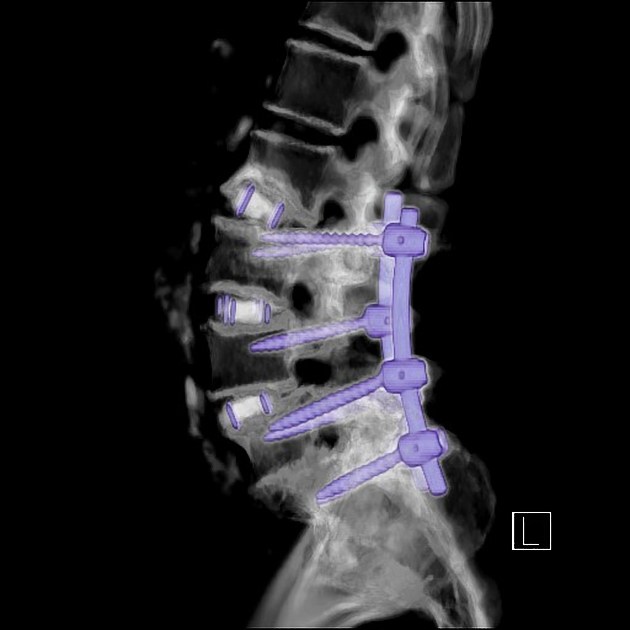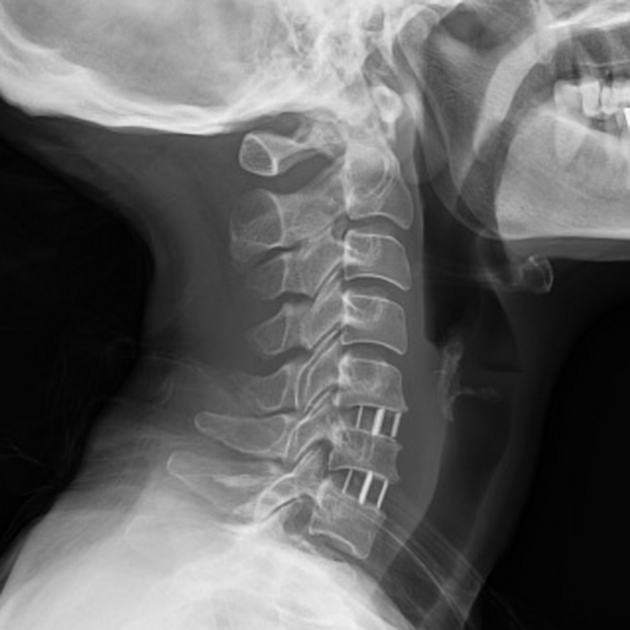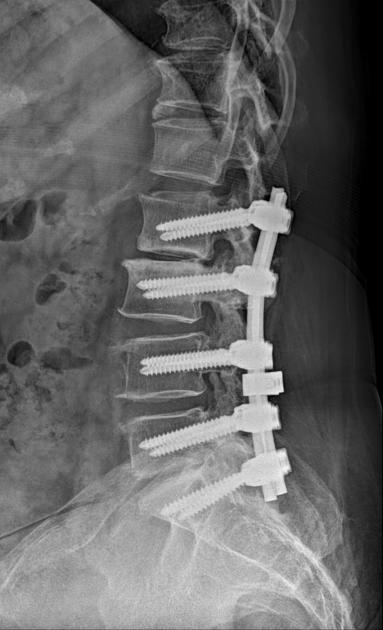Spinal fusion is a broad term to denote the joining of two or more adjacent vertebral segments. Fusion can be congenital or acquired as a direct result of disease or deliberately following spinal surgery.
On this page:
Congenital fusion
Fusion of two or more adjacent segments is encountered either as an isolated, usually incidental, finding or in a variety of conditions with multiple other defects:
Acquired fusion
Many disease processes can result in fusion of adjacent vertebrae including:
Surgical fusion
Numerous procedures have been developed over the years to fuse spinal segments to treat a variety of conditions (e.g. spondylolisthesis, unstable spinal fractures, disc protrusions). It should be noted that it is osseous fusion that confers long-term stability and that fusion solely with instrumentation will eventually fail 1.
Techniques
One or more of the above-mentioned components can be utilised to achieve fusion. Some of the more common procedures include:
-
lumbar interbody fusion 2











 Unable to process the form. Check for errors and try again.
Unable to process the form. Check for errors and try again.